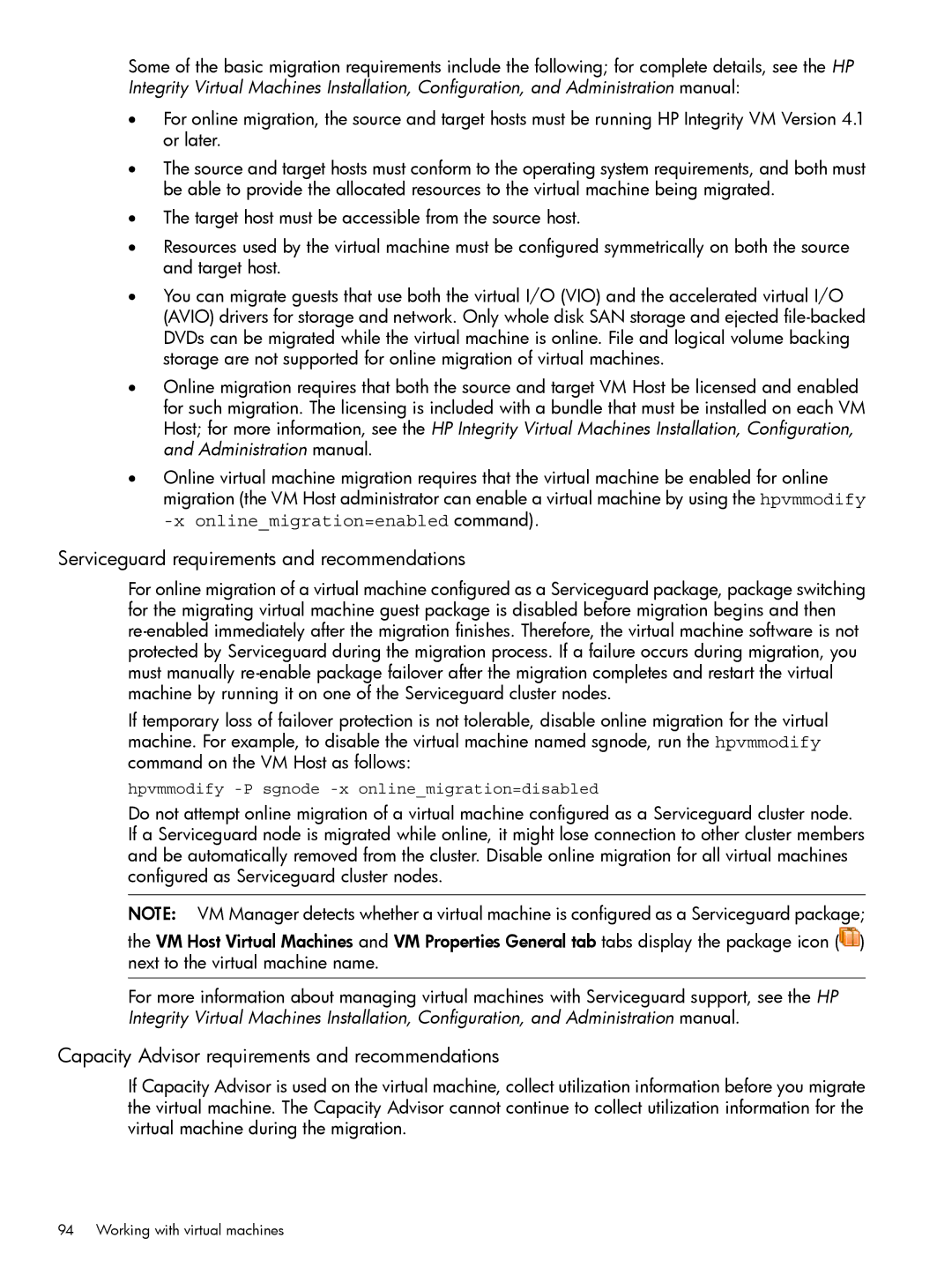
Some of the basic migration requirements include the following; for complete details, see the HP Integrity Virtual Machines Installation, Configuration, and Administration manual:
•For online migration, the source and target hosts must be running HP Integrity VM Version 4.1 or later.
•The source and target hosts must conform to the operating system requirements, and both must be able to provide the allocated resources to the virtual machine being migrated.
•The target host must be accessible from the source host.
•Resources used by the virtual machine must be configured symmetrically on both the source and target host.
•You can migrate guests that use both the virtual I/O (VIO) and the accelerated virtual I/O (AVIO) drivers for storage and network. Only whole disk SAN storage and ejected
•Online migration requires that both the source and target VM Host be licensed and enabled for such migration. The licensing is included with a bundle that must be installed on each VM Host; for more information, see the HP Integrity Virtual Machines Installation, Configuration, and Administration manual.
•Online virtual machine migration requires that the virtual machine be enabled for online migration (the VM Host administrator can enable a virtual machine by using the hpvmmodify
Serviceguard requirements and recommendations
For online migration of a virtual machine configured as a Serviceguard package, package switching for the migrating virtual machine guest package is disabled before migration begins and then
If temporary loss of failover protection is not tolerable, disable online migration for the virtual machine. For example, to disable the virtual machine named sgnode, run the hpvmmodify command on the VM Host as follows:
hpvmmodify
Do not attempt online migration of a virtual machine configured as a Serviceguard cluster node. If a Serviceguard node is migrated while online, it might lose connection to other cluster members and be automatically removed from the cluster. Disable online migration for all virtual machines configured as Serviceguard cluster nodes.
NOTE: VM Manager detects whether a virtual machine is configured as a Serviceguard package;
the VM Host Virtual Machines and VM Properties General tab tabs display the package icon (![]() ) next to the virtual machine name.
) next to the virtual machine name.
For more information about managing virtual machines with Serviceguard support, see the HP Integrity Virtual Machines Installation, Configuration, and Administration manual.
Capacity Advisor requirements and recommendations
If Capacity Advisor is used on the virtual machine, collect utilization information before you migrate the virtual machine. The Capacity Advisor cannot continue to collect utilization information for the virtual machine during the migration.
94 Working with virtual machines
